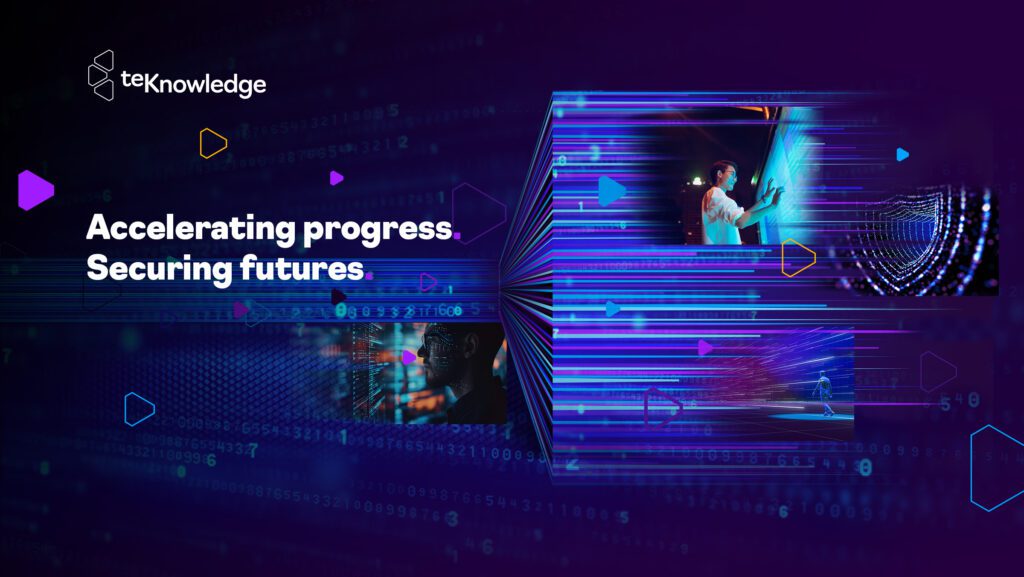ABOUT US
Cytek Security provides state-of-the-art cybersecurity solutions, delivered by the world’s top cyber experts. This includes advisory and implementation services, managed security services, and capability building.
Information security has become an increasing worry in a fast-changing digital world that is increasingly interconnected. Organizations are facing constant threats of cyberattacks and data breaches, which put at risk their reputation, their assets and their clients’ trust. To tackle this problem, the Zero Trust model has emerged, defying the traditional focus of “trusting but verifying,” and adopting a mentality of “not trusting and always verifying.”
Zero trust is based on the principle that no person, device, or app can be automatically reliable within a network, and it sets a default level of distrust that requires continuous validation on every access point. Some of the key elements of Zero Trust are:
- Granular authentication and authorization: Each user, device or application must be validated individually before allowing access to specific resources. In addition, specific permissions and privileges are assigned based on each entity’s need to perform its function.
- Network segmentation: The network is divided into smaller, isolated parts, which helps limit the reach of an attack and minimizes the impact in the event of a security breach. Each segment has specific access policies based on identity and context.
- Continuous visibility and monitoring: Security monitoring and analysis solutions are implemented to gain complete visibility into activities on the network. This includes monitoring users, devices, and applications, as well as detecting anomalous behavior and threats in real-time.
- Context-based security policies: Access decisions are made based on location, device used, time of day, and historical behavior. This ensures that security policies are dynamic and adjust to changing situations.
- Zero-tolerance approach: Each access request is evaluated and verified before being authorized, without making assumptions about prior reputation. Even internal connections within the network require authentication and continuous validation.
Benefits and Advantages
By requiring authentication and validation at each access point, Zero Trust reduces the attack surface to find a cybercriminal’s advancement within the network. This helps prevent advanced threats, such as lateral movement of attackers once they have achieved initial access.
“By adopting this model, organizations gain a clear understanding of their most valuable resources, allowing them to establish granular access controls and define precise rules for connecting to critical assets. This reduces the attack surface, strengthens data protection, improves incident response capabilities, aligns with compliance requirements, and improves overall risk management,” said Anat Garty, Chief Cybersecurity Architect at Cytek.
The model can also help organizations meet regulatory and compliance requirements by ensuring greater security and control. In addition, by enabling context-based access policies, Zero Trust allows users to access resources from different locations and devices, without compromising security. This encourages remote working, collaboration, and adoption of new technologies without compromising network protection.
Common challenges and obstacles when implementing a Zero Trust Strategy
The adoption of Zero Trust implies a significant transformation in an organization’s security infrastructure and policies. It can be complex and require careful planning as well as the coordination of multiple teams and stakeholders. It is necessary to perform a thorough analysis of the existing infrastructure, identify critical access points and establish consistent security policies at all levels of the network.
Zero Trust requires continuous authentication and validation at each access point, which can result in a more rigorous and potentially frustrating user experience. In addition, the approach is based on complete visibility of activities on the network, which implies the implementation of more advanced security monitoring and analysis solutions. Also, clear policies and procedures need to be established to respond to detected security alerts and events.
Deployment can encounter challenges related to compatibility with legacy systems and applications. Some existing solutions may not be easily integrated into a zero-trust environment and may require modifications or upgrades.
“Existing legacy systems may not support the required levels of permissions, monitoring and segmentation. They often lack the capabilities needed for granular access controls, continuous monitoring, and secure authentication,” said Garty. “Upgrading or replacing these systems can be costly and time-consuming and requires careful planning and integration to ensure compatibility with Zero Trust architecture,”
On the other hand, Zero Trust involves a significant cultural shift in the way security is approached within a company. It may require a “default distrust” mentality and increased security awareness at all levels. It is necessary to train and educate employees on the principles and practices of Zero Trust, fostering proper understanding and adherence to achieve a successful implementation.
Applying those additional controls on each access point can have an impact on network performance. Continuous identity verification and enforcement of security policies can place additional traffic overhead and increase latency. It is important to perform tests and adjustments to minimize any negative impact on performance.
We must keep in mind that Zero Trust is based on the ability to validate the authenticity and security of each interaction in real-time. This implies relying on continuous and reliable connectivity, which can present challenges in environments where the connection may be unstable or limited.
Tools and technologies to support Zero Trust
The successful implementation of Zero Trust requires the use of various tools and technologies that support the security principles and policies of this model.
Multi-factor authentication is key in this environment, since by requiring several elements such as passwords, verification codes, and physical or biometric tokens, security is reinforced and unauthorized access is prevented.
Identity and access management (IAM) solutions, on the other hand, allow you to centrally manage and control the privileges and rights of users and devices. “IAM solutions play a crucial role in a Zero Trust approach by managing and controlling user identities and their access to resources. Enable centralized user management, password management, single sign-on (SSO), and user rights and permissions management. This ensures that only authorized users have access to the necessary resources,” said Koga.
Also, a next-generation firewall (NGFW), is a must, offering advanced packet filtering and traffic analysis capabilities. They use technologies such as deep packet inspection, intrusion detection and prevention (IDS/IPS), and application control to establish context-based control policies and secure access points.
Software-defined network (SDN) security enables greater flexibility and control. Using it, enterprises can establish more granular network segmentation, isolate traffic, and enforce policies based on identity and context. In addition, security analysis and monitoring tools, such as Security Information and Event Systems (SIEM) and endpoint detection and response (EDR) solutions, are essential for detecting and responding to threats in real-time.
Micro-segmentation is a technique that involves dividing the network into smaller segments and applying specific security policies to each party. This allows for a higher level of control and protection, by further restricting access to critical resources and minimizing the potential impact in the event of a security breach. Virtual Private Network (VPN) is also used to establish encrypted connections between remote users and the corporate network.
A look into Zero Trust’s future
Zero Trust adoption is expected to become more widespread in the coming years. As organizations become more aware of security risks and seek more robust solutions, it will become a standard approach in cybersecurity strategy.
The integration of artificial intelligence (AI) and machine learning (ML) into the implementation of Zero Trust will be a major trend. These technologies can help improve threat detection and prevention, identify anomalous behavior patterns, and facilitate automated decision-making in real-time. AI and ML can further strengthen Zero Trust protection by adapting and responding quickly to emerging threats.
The increasing adoption of cloud solutions will also influence the future of Zero Trust. Their strategies will be tailored to address challenges specific to cloud environments, such as data protection, application access control, and identity verification on distributed platforms.
As Zero Trust becomes a common practice, there will also be an increasing focus on improving the user experience. Companies will look for solutions that are secure but also provide a seamless and seamless experience for customers. This involves implementing frictionless authentication, context-based access policies, and seamless interaction with applications and services.
To conclude, here are 10 steps to Zero Trust by Anat Garty, Chief Cybersecurity Architect at Cytek.
To correctly adopt this model, it is recommended:
- Define a clear Zero Trust strategy aligned with the organization’s objectives and compliance requirements.
- Identify and prioritize critical assets, such as sensitive data and applications.
- Implement strict access controls based on the principle of least privilege.
- Use micro-segmentation to limit lateral movement and contain threats.
- Improve visibility to continuously monitor and analyze network traffic, user behavior, and access patterns.
- Use encryption to protect data in transit and at rest.
- Foster a culture of safety awareness and education.
- Encourage collaboration and communication between teams.
- Incorporate the Zero Trust approach into change management processes.
- Regularly evaluate and improve implementation through audits and testing.
Following these practices will lay a solid foundation for a successful Zero Trust model, improving overall security.
This article was originally published in Spanish in Edition #159 of IT Now on Cybersecurity.





